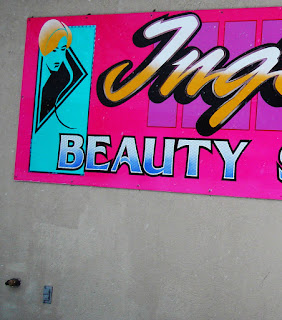Recommendations on Cleaning, Storage
and Shipping of Banners
 If your customers want their banners, awnings or flexible sign faces to last longer, they should be instructed to keep them clean, by simply washing them periodically with a mild detergent and warm water. Flexible materials that are not properly cleaned on a regular basis are guaranteed to stain and discolor. At the very least, exterior graphics should be washed once or twice a year.
If your customers want their banners, awnings or flexible sign faces to last longer, they should be instructed to keep them clean, by simply washing them periodically with a mild detergent and warm water. Flexible materials that are not properly cleaned on a regular basis are guaranteed to stain and discolor. At the very least, exterior graphics should be washed once or twice a year.
Banners and awnings installed in industrial areas will be subjected to a higher degree of air pollution and will require more frequent cleanings. At the very least, a banner should be cleaned before storing it. Do not use cleaners that contain abrasives or solvents. These cleaners can damage the substrate and void the manufacturer’s warranty. Also, customers should not use a pressure washer to clean banners, because the force of the sprayer can cause edge lifting.
Banners should be cleaned regularly to prevent dirt from embedding into the surface and to keep graphics looking good, so your customer projects a positive corporate image. Monthly cleanings need not be anything more that hosing down the banner with clean water or gently washing the surface with a non-abrasive detergent.
You should instruct your customer in the proper care and cleaning of banners and graphics to prevent damage to the signage. In cleaning the surface, always use a mild detergent. Only use a soft bristle brush in cleaning the substrate. Stiff bristle brushes can damage the banner.
Harsh chemicals can damage the banner substrate and graphics. Never clean the banner using hot water over 100°F. Never use a pressure washer to clean a banner. After washing the banner, rinse it thoroughly to remove any soap residue. Do not use heat to dry the banner substrate. Allow the newly cleaned banner to air dry.
Polyester fabric banners should be washed buy hand in lukewarm water. If a banner is wrinkled, you can iron the backside of the banner. To protect the fabric, lay a piece of lint-free cotton cloth before ironing. Do not iron the printed side of the banner.
Unlike vinyl banners, fabrics are less susceptible to wrinkling and creases. If the fabric does wrinkle, using the approved procedure, it can be ironed. Manufacturers typically recommend only ironing the side of the fabric, which was not printed.
Before ironing, cover the fabric with a lint-free rag, similar to the fabric used in making a cotton-tee shirt. The added protection of the cotton cloth with prevent melting polyester banners. Some top coated fabrics, but not all, can be spot cleaned.
Before using any cleaner, be sure to test it to prevent damage to the fabric or printed image. Some printed polyester banners can be washed. Before attempting this, carefully read the manufacturer’s recommendations covering cleaning.
Some fabrics, such as Sunbrella awning fabric, have a special surface treatment, which repels water. These treatments last for a few years, but are not designed to last forever. Thorough cleaning may require reapplication of this coating.
You should make your customers aware that banners are not signs designed to last forever. Nevertheless they can extend the life of their banners with proper care. Banners should never be folded. Ideally, banners should be rolled around a six inch fiberboard core with the graphics to the outside.
Rolling banners with the graphics to the inside frequently causes edge peeling and tunneling. So what do you do it the graphics are applied to both faces of the banner? Ship the banner flat. Many screen printers, however, print 2-sided banners and ship the material rolled. For a demanding application, such as this, Nazdar’s Laura Maybaum recommends using a screen ink that has high block resistance to prevent ink-to-ink blocking.
If you are shipping a number of vinyl banners to a customer, you can prevent any abrasion to the vinyl graphics by using used release liner as a slip sheet between the individual pieces.
In handling and packaging vinyl banner substrate, you should roll the material on a 3-inch core or larger. Graphics should be rolled facing the outside of the roll. In no case, should the banner material be folded. Folded banners can form an unsightly crease or wrinkle in the material. If this happens, you can remove the crease by heating the material with a heat gun.


